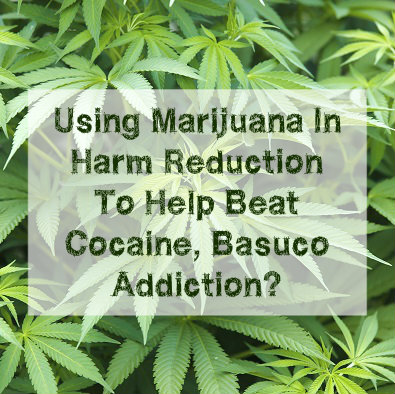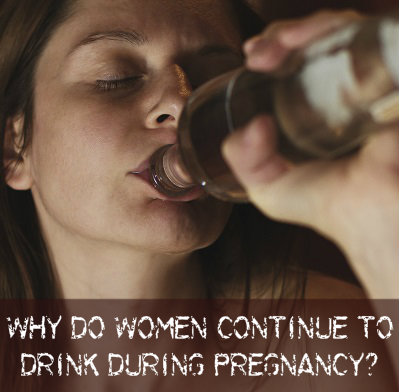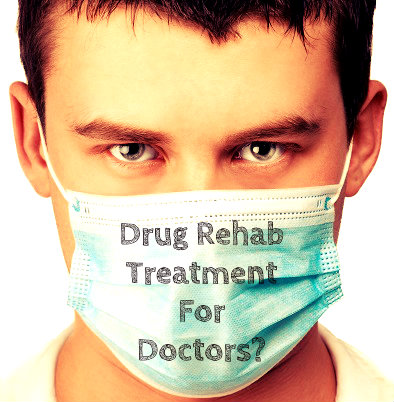What Is Harm Reduction?
Harm reduction is a controversial technique used to help treat addicts, particularly drug addicts. The philosophy behind this method of treatment is to help an addict use safely, rather than forcing him to stop using. By aiding addicts, the caregivers reduce the potential for harm. Although using illegal drugs is always harmful, doing it in a safe environment helps to prevent overdose deaths and the spread of disease. Proponents of harm reduction believe that once a user is in a safe environment, he can make the choice to quit.
 The method of harm reduction is not new. It has been around for decades and begun with the practice of giving heroin addicts a substitute drug called methadone. Other harm reduction programs include handing out clean needles to heroin users and providing a safe place to use. Critics of the technique feel that harm reduction only encourages addicts to keep using. In spite of criticisms, harm reduction continues to be used, not just in the US, but in other countries as well. In Colombia, officials are trying harm reduction treatment with cocaine addicts, and finding success.
The method of harm reduction is not new. It has been around for decades and begun with the practice of giving heroin addicts a substitute drug called methadone. Other harm reduction programs include handing out clean needles to heroin users and providing a safe place to use. Critics of the technique feel that harm reduction only encourages addicts to keep using. In spite of criticisms, harm reduction continues to be used, not just in the US, but in other countries as well. In Colombia, officials are trying harm reduction treatment with cocaine addicts, and finding success.
Colombia – Cocaine Capital Of The World
Colombia is the cocaine capital of the world, producing more of the illegal drug than anywhere else on the planet. Cocaine comes from a plant native to South America called coca. The leaves of this plant naturally contain cocaine, which is a psychoactive stimulant. For many years, the natives of the area have chewed coca leaves for the high, but have also used them for medicinal purposes.
To get the cocaine out of the leaves, drug manufactures must go through a multi-step chemical process and end up with the white powder that is sold in the illegal marketplace. Most of this cocaine comes out of Colombia and is smuggled into the United States. In Colombia and particularly in Bogota, the capital, there is a real problem with addicts who use a base form of cocaine. It is a low-quality, low-purity form of the drug called basuco. It is an intermediate product in the process of making cocaine and it often contains residues of the solvents used, like kerosene. It may also have fillers like crushed bricks or ashes. Basuco is even more addictive than cocaine and is a rising problem in Bogota.
Harm Reduction for Basuco Addicts
Basuco is so addictive and so hard a habit to kick that the public health officials in Colombia have taken action and are using harm reduction. They have created controlled consumption facilities where addicts are given increasingly smaller doses of basuco and given marijuana instead. The idea is to help addicts stop using this very dangerous drug in a controlled manner. Marijuana is used like a substitute. Although it is a drug, it is much safer than basuco.
Addiction experts who espouse a traditional view of treatment believe that addicts must give up a drug completely and refrain from using any other substance. Increasingly, this traditional type of treatment is being proven ineffective. To fill the gap, harm reduction techniques are emerging around the world. The harm reduction programs for basuco addicts in Bogota are already helping people.
Using Marijuana For Harm Reduction
The philosophy of harm reduction, in itself, is controversial. Adding marijuana to the technique adds another level to the debate. To many staunch traditionalists, giving an addict another drug is simply wrong and in opposition to their beliefs about addiction. The facts, however, support this technique. Research investigating the use of marijuana for addicts using prescription painkillers has turned up positive results. The medical marijuana used by these people helped to reduce side effects from the painkillers, helped to manage pain, and helped to reduce the symptoms of withdrawal when the painkillers were taken away.
Other studies also showed evidence that using marijuana could help addicts. One study demonstrated that smoking small amounts of marijuana aided heroin addicts by keeping them in their treatment programs. Another study indicated that cocaine users in rehab who also used marijuana moderately were more successful at quitting than those who never smoked marijuana.
How Harm Reduction Helps
The idea of using drugs to cure addiction may seem radical. Certainly, the philosophy of giving addicts their drugs of choice in a safe environment is not without controversy. As traditional treatments fail to help addicts, however, these other options must be considered. The research and the results are very promising. Harm reduction and the use of marijuana are already helping cocaine addicts, and could help others as well.
A recent study estimates that close to 10% of pregnant women drink alcohol. Given the potential harm that can come to a fetus when exposed to alcohol during development, and the fact that vast majority of females at child bearing age were probably taught this at some point in their lives, this number is truly upsetting. Unfortunately, it’s also not shocking.
Some people still think that alcoholism (or other forms of addiction) is a moral failing rather than a bona fide medical disorder. Sometimes the impulse to drink can be so great that an alcoholic will put the importance of a drink over the safety and well-being of loved ones. It happens all the time with parents of young children, even when there is overwhelming evidence that the parent is a good person and truly loves their kids. Who doesn’t know someone who grew up in an alcoholic household? Is there any reason to think that the simple fact of pregnancy would be able to reign in such a terrible disease?
Condemning Addicted Pregnant Women vs. Helping Them Abstain From Alcohol
 Instead of chastising and condemning pregnant women who drink, we should be devising ways to help them abstain from alcohol during gestation. For hard core alcoholics, it is entirely possible that the only way to stop them from drinking for close to a year would be to physically restrain them. Barring that, however, there are things that we can do to try to reduce the incidence of drinking while pregnant.
Instead of chastising and condemning pregnant women who drink, we should be devising ways to help them abstain from alcohol during gestation. For hard core alcoholics, it is entirely possible that the only way to stop them from drinking for close to a year would be to physically restrain them. Barring that, however, there are things that we can do to try to reduce the incidence of drinking while pregnant.
We, as a society, must be more proactive in teaching people about the risk of fetal alcohol syndrome, a complication that can happen if a mother drinks while pregnant. People born with fetal alcohol syndrome will likely have abnormal faces, growth issues, and problems in the central nervous system. These issues will not improve over time and the neurological impairments can lead to learning disabilities and behavioral issues, like attention deficit disorder. Fetal alcohol syndrome affects up to 3 million people in the US alone.
The problem with teaching about the dangers of fetal alcohol syndrome is that evidence is murky when it comes to determining how much alcohol can safely be consumed before a fetus is put at risk. It used to be, at least prior to the 1980‘s, that doctors never restricted women from drinking alcohol during pregnancy. However, at some point the medical establishment changed its tune and soon no amount of alcohol was permitted during pregnancy. Now, conflicting information can be found everywhere.
How Exactly Does Fetal Alcohol Syndrome Happen?
Babies do not inherit fetal alcohol syndrome. Instead, the ingested alcohol actually damages developing neurons and destroys brain cells. The damage can occur at any point in fetal development, even before the mother knows that she is pregnant. Once the cells have been compromised, there is presently no way to undo the damage.
Educate Teens On Abstaining From Alcohol If Having Sex
Without knowing exactly how much alcohol is safe for fetuses, the only safe option for pregnant women is to avoid drinking altogether. Since drug-related birth defects affect not only the child but society in general, more resources need to be expended to help keep pregnant alcoholics sober during gestation and continually remind women of all ages about the dangers of exposing themselves to toxic substances if there is a chance they could become pregnant. Since alcohol and sex many times go hand in hand, it is a responsible and appropriate discussion to have with kids, especially given how prevalent substance abuse is in some sub-teen populations.
Addiction During Pregnancy – All Of Our Concern
In addition to increasing the amount of materials available to women of child-bearing age regarding the dangers of drinking, medical professionals in all venues need to be more vigilant in identifying mothers who are actively drinking or are at risk of developing a drinking problem during pregnancy. Although alcohol rehab programs have begun offering specialized treatment programs for addicted mothers, the number of available beds is woefully inadequate to handle the sheer number of people requiring treatment. Hopefully governments will begin to see addiction during pregnancy as a public health crises and funnel adequate resources into handling the disease. If someone you know is drinking during pregnancy, encourage them to seek help.
Bipolar disorder is a mental illness that causes significant mood swings. It affects as much as two percent of the population and first manifests primarily in the late teens and early 20s. Although the severity and types of mood can vary dramatically among patients, the most common example of bipolar disorder is a cycling between periods of happiness and sadness, often at extreme levels (i.e. euphoria vs. despair). Although counseling can help patients learn how to identify their distinct moods, as well as the things that trigger each mood swing, many patients will also benefit from some sort of medication to help dampen negative symptoms and neutralize moods.
 It is now pretty obvious that people who are taking prescription medications, including bipolar medications, should refrain from drinking alcohol or using recreational drugs as these substances can negatively interfere with the proper functioning of the medication. In some cases, the prescriptions and other substances can negatively interact to the point of overdose or death.
It is now pretty obvious that people who are taking prescription medications, including bipolar medications, should refrain from drinking alcohol or using recreational drugs as these substances can negatively interfere with the proper functioning of the medication. In some cases, the prescriptions and other substances can negatively interact to the point of overdose or death.
The Importance Of Identifying Signs Of Substance Abuse In Bipolar Patients
Unfortunately, due to the nature of the disease, some bipolar patients are unable to refrain from using alcohol or drugs even when they are taking prescription medication for their illness. In fact, roughly half of all patients with some form of bipolar disorder also have a drug or alcohol problem. Thus, when treating a patient who has bipolar disorder, mental health professionals must be vigilant in identifying signs of substance abuse or alcoholism as the two illnesses tend to go hand in hand.
Scientists have yet to discover a definitive explanation for the high incidence of substance abuse among bipolar patients. In fact, the real explanation likely entails a combination of factors. For instance, genetics may play a pivotal role — a family history of substance abuse plus bipolar disorder increases a person’s risk of having both diseases. Further, bipolar disorder can be a tough illness to treat. Although certain medications have been shown to be successful in alleviating certain bipolar symptoms in many patients, there is currently no cure for the disease and no one magic medication that renders all patients symptom free. As such, many patients use drugs and alcohol as a way to escape the symptoms of or fallout from the disease. This phenomenon is known as “self-medicating” and is often found in patients with the more debilitating mental illnesses, including bipolar disorder.
It turns out that doctors must be especially vigilant when it comes to identifying substance abuse in female bipolar patients. Studies show that females suffering from bipolar disorder are several times more likely to abuse alcohol than men with bipolar disorder. Although men with bipolar disorder also have a higher incidence of alcoholism than men without bipolar disorder, the rate is nowhere near as high as with women.
Factors For Bipolar Disorder
While it could certainly be true that bipolar patients have a higher predisposition to addiction than non-patients, both family history and the fact that bipolar patients tend to self-medicate with drugs and alcohol is more likely the culprit behind such a high rate of alcoholism. Researchers at UCLA conducted a study of roughly two hundred and fifty bipolar patients who were being treated at UCLA on an outpatient basis. The results of the survey showed that the males with alcohol problems were more likely to have a history of alcoholism in their families than males without such alcohol problems.
However, female participants with alcohol problems did not report similar rates of family alcohol problems. Instead, these patients reported co-occurring issues with anxiety and depression. Thus, researchers hypothesized that women bipolar patients were more likely to self-medicate than their male counterparts. Unfortunately, research also suggests that women are less likely to seek help for drinking problems than men. This puts female bipolar patients at high risk not only for alcoholism, but for untreated alcoholism.
Read More About Addiction And Mental Health – There Is Hope!
04 Nov 2013
Drug Rehab Treatment For Doctors?
Addiction is a mental health issue that is best treated by a team of professionals, including a psychiatrist who specializes in addiction. This is not the type of disorder that can be adequately addressed by a family doctor or general practitioner and very few active addicts can successfully treat themselves. Drug rehab centers have been set up all over the country to deal with addiction-related disorders.
Certain individuals (especially those who have access to addictive medications, routinely witness other people’s trauma, or have high-stress professions) are incredibly vulnerable to addiction disorders and may require even more specialized addiction treatment than members of the general population.
Doctors Reluctant To Enter Treatment
 One such subset are physicians who have become addicted to drugs or alcohol and need to enter a drug rehab facility to recover, either voluntarily or at the request of an employer or licensing body. However, since the mere disclosure of the existence of the disorder can mean the end of a doctor’s career, physicians are often reluctant to participate in mainstream addiction treatment programs where anonymity is not assured and significant periods of time off work is required.
One such subset are physicians who have become addicted to drugs or alcohol and need to enter a drug rehab facility to recover, either voluntarily or at the request of an employer or licensing body. However, since the mere disclosure of the existence of the disorder can mean the end of a doctor’s career, physicians are often reluctant to participate in mainstream addiction treatment programs where anonymity is not assured and significant periods of time off work is required.
However, when addressing the fact that disclosing an addiction problem can threaten a physician’s professional career and reputation, one must weigh the potential fallout against the potential harm suffered by a patient who is being treated by someone under the influence, in withdrawal or just hung over. Keeping in mind the doctor’s oath to “first, do no harm”, the necessity to seek professional treatment for a drug or alcohol problem is obvious. Professional treatment programs can help physicians get the help they need while minimizing damage to ongoing careers.
Specialized healthcare for doctors as patients is not a new concept. Over the past few decades, states have sponsored their own physician health programs with the goal of encouraging doctors to seek treatment for issues that, in the absence of assured privacy, they would tend to keep hidden. Addiction has been, and continues to be, one such disorder, where the professional stigma attached to entering drug rehab can follow a doctor even after recovery.
Physician Addiction Treatment Steps
The hallmark of any good physician health program will be an addiction treatment plan completely individualized to meet each doctor’s treatment goals in a way that best assures confidentiality and minimizes career disruption. During the initial evaluation, intake professionals at the physician health program will evaluate not only the level of drug or alcohol addiction, but also screen for co-occurring addictive behaviors and other mental health disorders.
There will often be a team of highly qualified addiction professionals working together to help the physician achieve lasting sobriety and, in some cases, may communicate with professional monitoring agencies when treatment has been mandated by a licensing body.
Support For Family And Staying Sober
In addition, support for partners, spouses, and children will be offered through specialized family programs. After initial recovery, the physician treatment center may offer continuing care to help the doctor maintain sobriety even after he returns to his job. This is especially important when the presence of triggers, such as medications, stress and patient trauma, will continue to be an everyday occurrence.
The most important aspect of physician treatment programs, however, is that they work. When matched with an appropriate drug rehab, doctors can get and stay sober even when their careers require them to be in the presence of powerful triggers on a daily basis. Recent research surrounding professional addiction treatment for doctors shows that this specialized type of care can dramatically reduce the rate of relapse after initial sobriety (as low as 3%) and help save careers. In fact, over 95% of participants in physician health programs successfully return to work. In comparison, the US population suffers a staggering 50% relapse rate.
Marijuana is a plant-based drug known for its potential to produce physical/mental dependence and other significant health issues when used repeatedly over extended periods of time. Generally speaking, health risks associated with marijuana use are linked to such factors as consumption level and the potency of any given batch of the drug. In a study published in October 2013 in the journal Addiction, a multi-institution Dutch research team sought to determine whether young adult users can accurately gauge their level of marijuana consumption or the potency of the marijuana they smoke or ingest. These researchers concluded that young adults generally do a poor job of accurately tracking their marijuana usage.
Effects And Health Consequences Of Marijuana
![]() Marijuana is the most readily available form of a plant-based drug called cannabis, which has a chief active ingredient called THC (tetrahydrocannabinol). When THC molecules enter the bloodstream, they attach themselves to nerve cells inside the brain and trigger a form of mind alteration classically associated with effects such as heightened pleasure levels, reduced body coordination and substantial changes in normal thought and perception. In controlled circumstances, marijuana use is now legal in certain jurisdictions across the U.S. However, most states still consider marijuana use illegal, and federal statutes also prohibit use of the drug.
Marijuana is the most readily available form of a plant-based drug called cannabis, which has a chief active ingredient called THC (tetrahydrocannabinol). When THC molecules enter the bloodstream, they attach themselves to nerve cells inside the brain and trigger a form of mind alteration classically associated with effects such as heightened pleasure levels, reduced body coordination and substantial changes in normal thought and perception. In controlled circumstances, marijuana use is now legal in certain jurisdictions across the U.S. However, most states still consider marijuana use illegal, and federal statutes also prohibit use of the drug.
According to the National Institute on Drug Abuse, marijuana use is associated with mental and physical health risks that include learning and memory deficits during adolescence, lowered IQ scores during adulthood, temporary heart rate increases, heartbeat irregularities, impaired judgment and decision-making, impaired memory functions, a reduced ability to control body movements, the same types of lung-related ailments that commonly affect cigarette smokers and temporary bouts of psychosis (a mental health term for hallucinations and/or delusional thinking). In addition, habitual smokers of the drug have heightened risks for developing longer-term forms of psychosis that persist over time.
Marijuana Addiction Risks
Marijuana has a relatively benign reputation when compared to other powerful, illicit or illegal substances such as amphetamine/methamphetamine, cocaine or opioid narcotics. Despite this reputation, current scientific evidence indicates that all habitual marijuana users run a considerable risk of becoming physically dependent on the drug and subsequently developing the drug-oriented personal and social behaviors classically associated with the presence of addiction. Roughly 17 percent of individuals who start marijuana use before reaching adulthood become addicted, while anywhere from one-quarter to one-half of all everyday users develop an addiction. Part of the addiction risk associated with the drug stems from a rise in marijuana potency over the last several decades. While some sources report a 3,000 percent increase in the drug’s potency in that timespan, more reliable estimates place the increase in strength at anywhere from 200 percent to 600 percent.
Marijuana Smoker’s Estimates Of Usage
In the study published in Addiction, researchers from three Dutch institutions sought to determine how accurately habitual marijuana users can track their intake of the drug. To a certain extent, accurate tracking could potentially reduce the risks for the onset of addiction by allowing users to gauge their level of involvement in drug use and curb that level when necessary. The researchers made the first part of their assessment by asking 106 young adults to estimate their level of marijuana use, as well as their level of intoxication and the relative potency of the marijuana they consumed. Next, the researchers compared the participants’ estimates to objectively verifiable measurements of these same factors.
The authors of the study found that, by objective measurement, the amount of marijuana used by an individual in any given situation varies considerably, as does the potency of any given marijuana batch. However, they also concluded, marijuana users typically do a bad to mediocre job tracking these changes in potency and amount. As a result, marijuana users tend to have only a partially reliable ability to understand and monitor their true level of marijuana use.
Significance And Conclusions Of Marijuana-Use Study
The authors of the study in Addiction did not specifically associate a limited ability to track marijuana usage with increased risks for physical dependence and addiction. However, by logical inference, people who don’t know how much marijuana they use or how strongly that marijuana affects them may fail to notice key physical and mental changes that signal the onset of dependence- and addiction-related problems. Subsequently, they may fail to take critical steps necessary to prevent the onset of dependence or addiction. The study’s authors note that young adult marijuana users don’t entirely fail to track their marijuana intake; instead, they simply track their intake too poorly to make reliable estimates.


